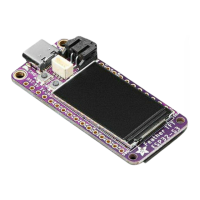Boards Without CIRCUITPY
CircuitPython is available for some microcontrollers that do not support native USB.
Those boards cannot present a CIRCUITPY drive. This includes boards using ESP32
or ESP32-C3 microcontrollers.
On these boards, there are alternative ways to transfer and edit files. You can use the
Thonny editor(), which uses hidden commands sent to the REPL to read and write
files. Or you can use the CircuitPython web workflow, introduced in Circuitpython 8.
The web workflow provides browser-based WiFi access to the CircuitPython
filesystem. These guides will help you with the web workflow:
CircuitPython on ESP32 Quick Start()
CircuitPython Web Workflow Code Editor Quick Start()
Creating and Editing Code
One of the best things about CircuitPython is how simple it is to get code up and
running. This section covers how to create and edit your first CircuitPython program.
To create and edit code, all you'll need is an editor. There are many options. Adafruit
strongly recommends using Mu! It's designed for CircuitPython, and it's really simple
and easy to use, with a built in serial console!
If you don't or can't use Mu, there are a number of other editors that work quite well.
The Recommended Editors page() has more details. Otherwise, make sure you do
"Eject" or "Safe Remove" on Windows or "sync" on Linux after writing a file if you
aren't using Mu. (This is not a problem on MacOS.)
•
•
©Adafruit Industries Page 43 of 263

